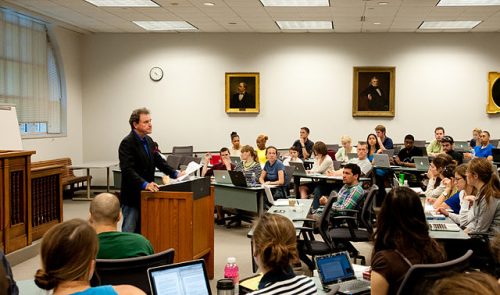Many students since the pandemic have questioned whether they should attend graduate school or change their career plans altogether. The Chronicle of Higher Education reported that 17 percent of graduate students said their career plans changed since the pandemic started.
Students are now worried they cannot afford graduate school. According to a 2020 Pew Research Center Survey,
Half of the oldest Gen Zers reported that they or someone in their household had lost a job or taken a cut in pay because of the outbreak. This was significantly higher than the shares of Millennials (40%), Gen Xers (36%), and Baby Boomers (25%).
Students are also dealing with mental health and problems job hunting in a pandemic, too. But for some paths after undergrad, students could find a solution with tuition reimbursement programs.
Tuition reimbursement is an employee benefit that an employer may offer to their graduate school employees. The employer pays for a predetermined amount of education credits or college coursework. The employee may then be required to work for the employer for a certain amount of time while they take their courses or after receiving their degree.
According to Northeastern University Graduate programs, employers spend $177 billion annually on formal education and training programs for their employees, and $28 billion of this spending is for tuition benefits. Almost 60 percent of employers in the US offer either tuition assistance or reimbursement to their employees, but not many employees take advantage of the programs.
Those who do generally use it for law or medical school. Medical school is 4 years and a student can expect to pay anywhere from $150,444 (in-state, public school) to $247,664 (out-of-state, public school) or more. Law school is 3 years but still costly; from $85,000 (in-state, public school) to $150,000 (private school) or more for a degree.
Some law firms have tuition reimbursement programs so that law students may work at a law firm while getting their tuition paid off. The firm gets to train a future lawyer to focus where the need arises. Instead of hiring a lawyer fresh out of school with no experience, a firm invests in a student as they learn about the firm and the legal world.
For example, Finnegan, Henderson, Farabow, Garrett & Dunner is a law firm that specializes in patent and trademark work and has a reimbursement program that covers 100 percent of employees’ law school tuition.
Students don’t get guaranteed reimbursement that easily, however. A full reimbursement requires an A in their courses. A letter grade of a B is eligible for 80 percent reimbursement and a C is eligible for 60 percent. They also work part-time as “student associates.”
Dawn Ibbott, director of human resources and administration at the firm told The Washington Post that the program is “an incentive for the employee to do as well as possible with their course work.”
Similarly, the high price to become a doctor or surgeon can be mitigated by scholarships and loan repayment programs.
While it may not be for everyone, “the Health Professions Scholarship Program (HPSP) offers medical trainees a full-tuition scholarship in addition to a monthly stipend, in exchange for a specified term of commitment to a branch of the U.S. Armed Forces.” Serving in a marginalized community can also lead to loan forgiveness through the National Health Service Corps or the Indian Health Service.
University hospitals also tend to offer tuition repayment as an employee benefit for staying with the hospital for a decade. Other medical groups may offer full or partial tuition repayment.
Though it may be harder for would-be grad students in the social sciences to find generous tuition reimbursement plans, for some students, the opportunity is out there.
Megan Zogby is a Martin Center intern.

